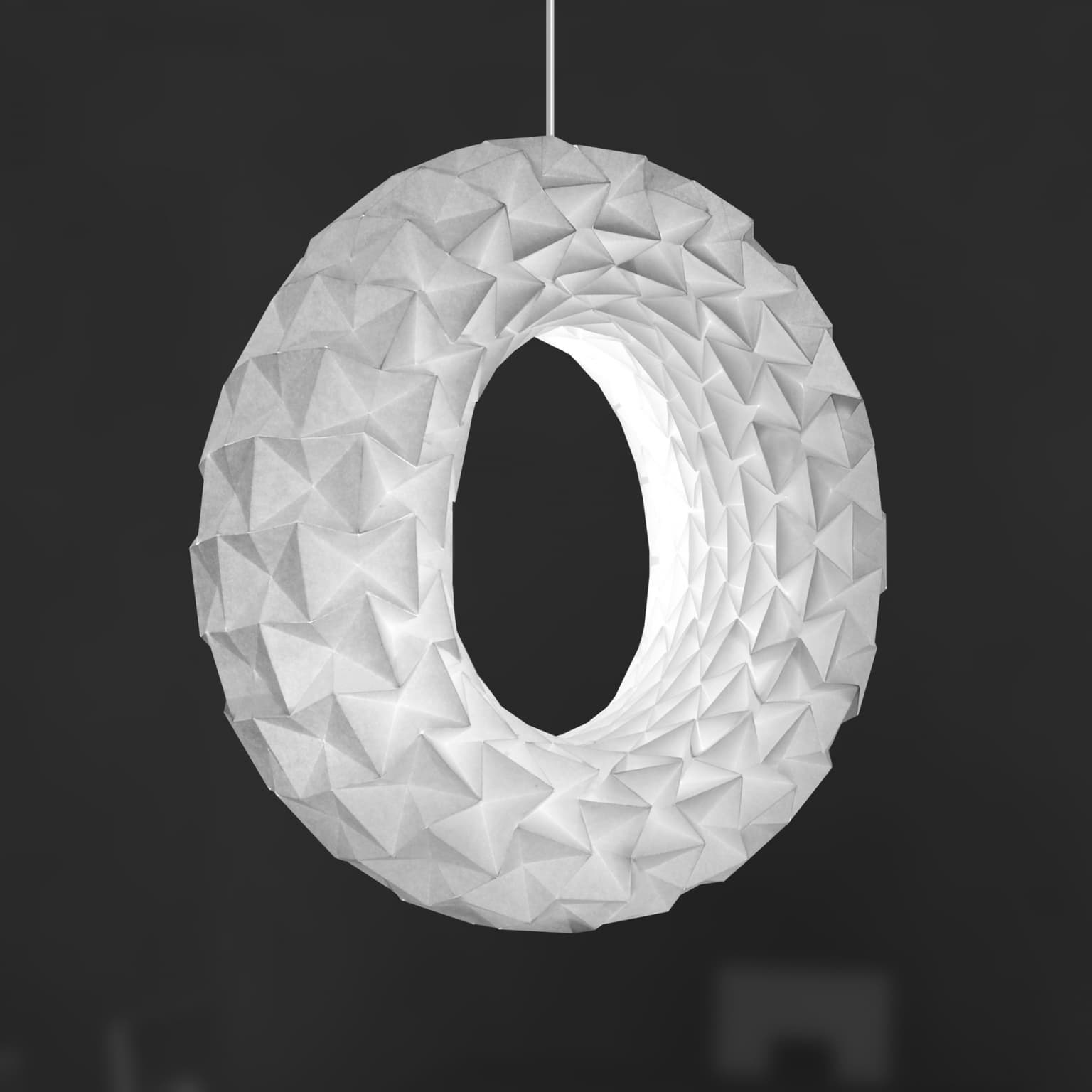2017 Joint Mathematics Meetings
JIangmei Wu
Artists
Jiangmei Wu
Associate Professor
Eskenazi School of Art, Architecture, and Design, Indiana University
Bloomington, Indiana, USA
Statement
Paper folding is an exciting area of art and design. Folding a piece of paper can be simple and doesn’t require any sophisticated tools. However, to model the morphology and to understand the intrinsic properties found in paper folding scientifically is very difficult and requires sophisticated tools of mathematics and computer science. As an artist, I'm interested in how paper folding can be expressed mathematically, physically, and aesthetically, how it can be done with different material and making techniques, and how these aspects work together with the conceptual space in which they occur.
Artworks

Torus
45 x 45 x 20 cm
Hi-tec Kozo Paper
2014